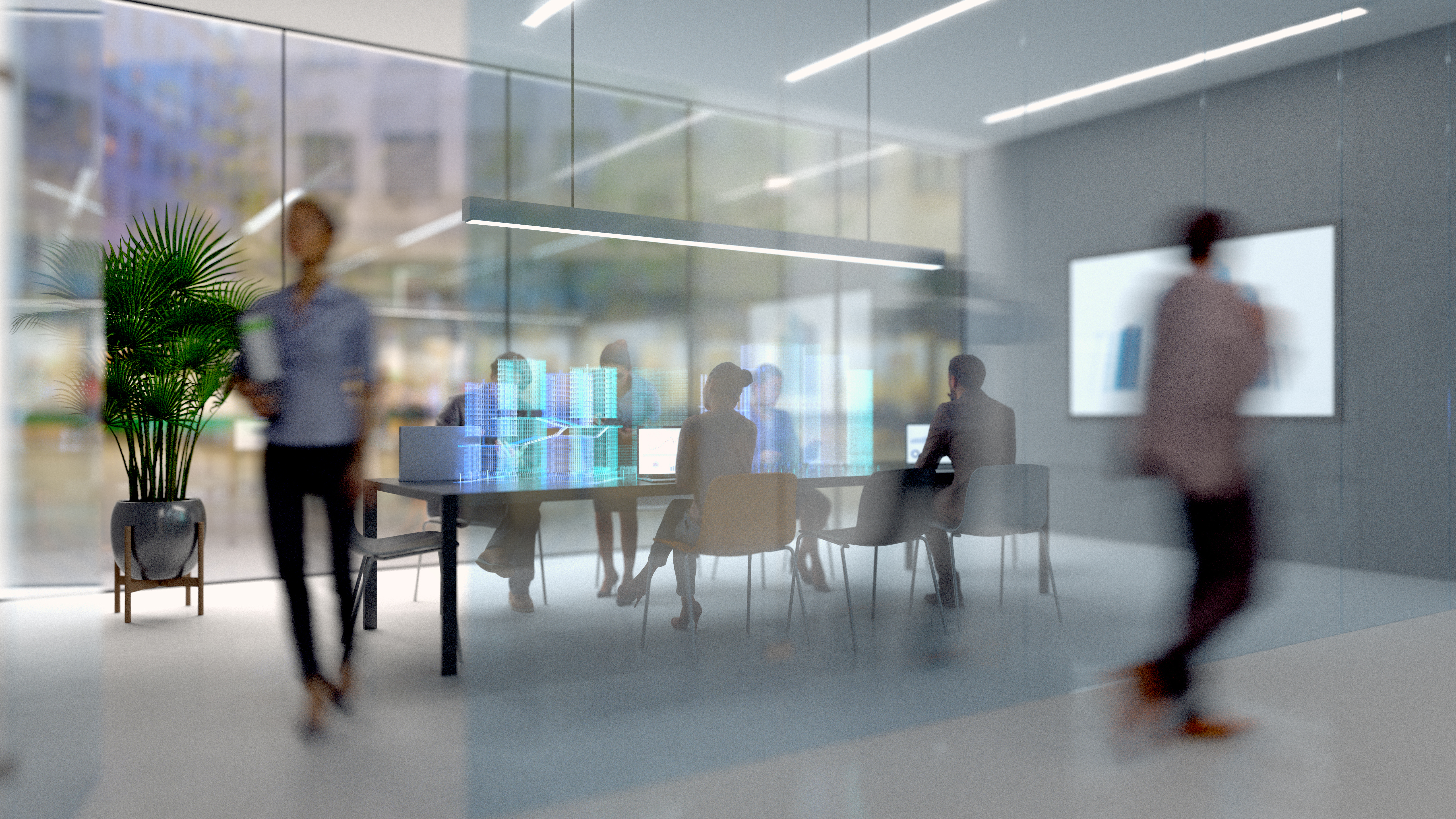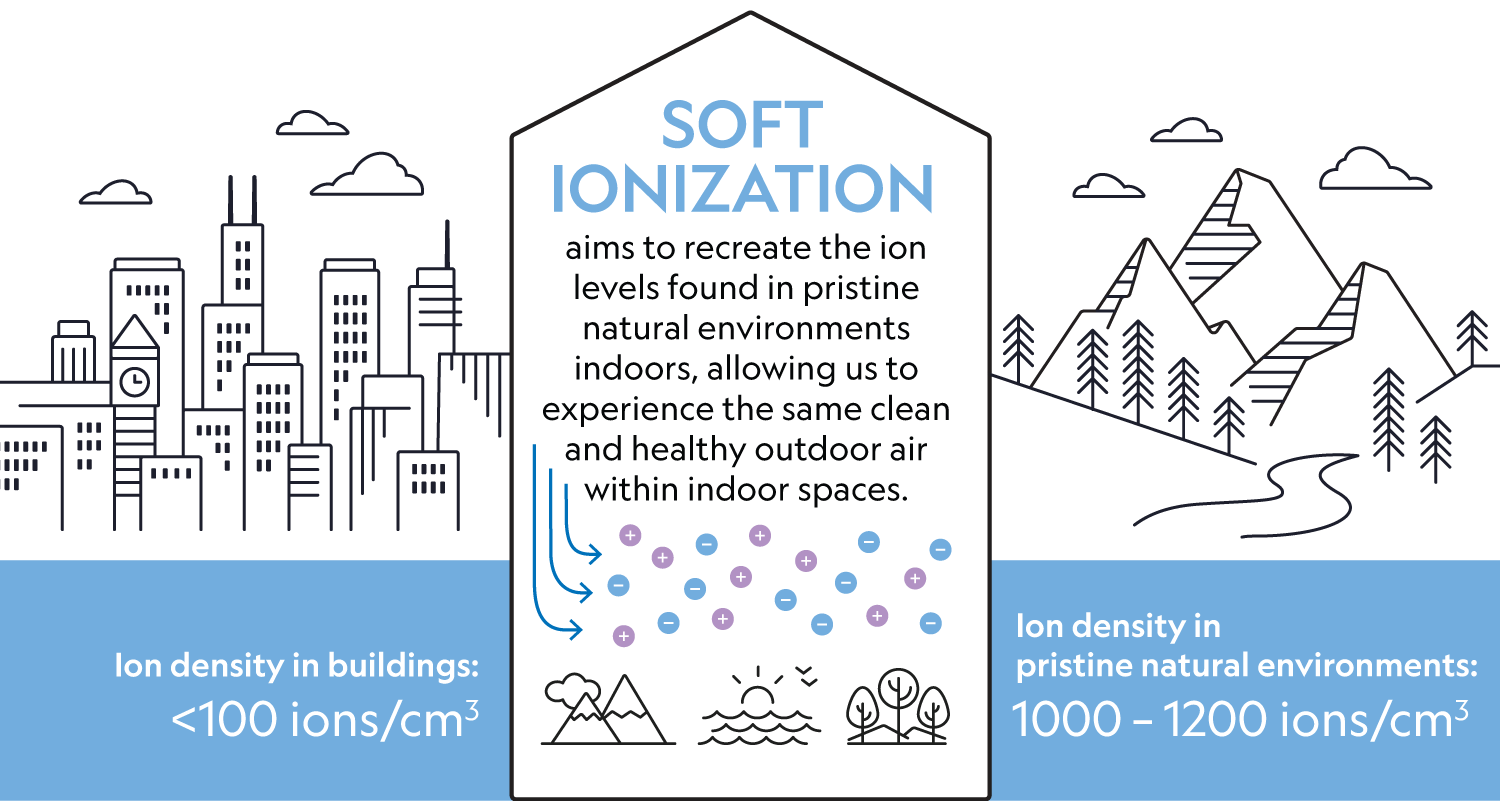Tech Brief on Ionization
Published

Not All Ionization Technologies Are the Same
CLICK HERE FOR THE FULL TECHNICAL BRIEF
Technologies such as soft ionization (also known as bipolar ionization/BPI) are revolutionizing clean and safe indoor air solutions in various settings, including homes, schools, commercial real estate, healthcare facilities, hospitality, and entertainment sectors.
When combined with ventilation and filters, soft ionization provides a comprehensive and cost-efficient approach to enhancing indoor air quality as part of a multi-layered strategy.
Ionization is a process in which oxygen molecules gain or lose electrons, acquiring a negative or positive charge. When a molecule gains or loses one or more electrons, it becomes ionized. These ions can effectively reduce and neutralize particulate matter, bacteria, virus cells, odorous gases, aerosols, and VOCs like formaldehyde. Furthermore, ionization causes particulate matter to agglomerate, making it easier and more effective to remove with existing particle filters.
DIFFERENCE BETWEEN SOFT IONIZATION AND HARD IONIZATION
Some ionization technologies employ high-power methods that create a strong electrical field, known as hard ionization. Hard ionization typically operates at high voltage and produces a complex spectrum of fragmented ions that can generate gases like ozone. High concentrations of ozone can be harmful to human health.
In contrast, soft ionization (bipolar ionization/BPI) techniques utilize lower energy levels, preserving the molecular integrity of the formed ions. Soft ionization provides a safe and gentler approach, maintaining the integrity of ions without generating harmful gases.

It's worth noting that oxygen ions occur naturally in outdoor environments near oceans, forests, mountain tops, and waterfalls. The aim of soft ionization is to recreate the ion levels found in these pristine natural environments indoors, allowing us to experience the same clean and healthy outdoor air within indoor spaces.
BENEFITS OF SOFT IONIZATION
1. Continuous Air Cleaning: Soft ionization systems are designed to operate continuously, ensuring a consistent purification process in occupied spaces. As ions are generated and released into the air, they actively seek out and interact with pollutants, providing ongoing air cleaning.
This feature is particularly useful in environments that require consistent air quality maintenance, such as offices, schools, hospitals, and homes.
2. Effective Particle Removal: Soft ionization produces positively and negatively charged ions that attach to airborne particles such as dust, pollen, mold spores, and bacteria. These charged particles then cluster together, becoming larger and heavier, making them easier to remove from the air. The increased size and weight facilitate their filtration by air purifiers, ventilation systems, or settling on surfaces.
3. Broad Spectrum of Action: Soft ionization can neutralize a wide range of pollutants, including volatile organic compounds (VOCs), aldehydes, odors, and viruses. For example, soft ionization can convert ammonia into naturally occurring nitrogen gas and water vapor.
The charged ions generated by soft ionization systems react with and break down these pollutants, reducing their harm or eliminating them. This broad spectrum of action makes soft ionization effective against various contaminants present in indoor air.
4. Reduced Chemical Usage: Unlike other air purification methods that rely on chemical disinfectants or filters, soft ionization does not require additional chemicals or consumables. It generates ions from existing air molecules, making it a more sustainable and cost-effective solution in the long run. Soft ionization systems utilize very low power to produce ions and require minimal maintenance.
5. Inactivation of Microorganisms: Soft ionization has been proven to reduce the viability of certain microorganisms, including bacteria, viruses, and mold spores. The charged ions disrupt the cellular structures of these pathogens, inhibiting their reproduction and survival.
While the degree of inactivation may vary depending on the specific microorganism and conditions, soft ionization contributes to creating a healthier indoor environment.
6. Odor Reduction: Soft ionization helps minimize unpleasant odors by neutralizing odor-causing compounds present in the air. The charged ions interact with volatile molecules responsible for odors, breaking them down or combining them into less odorous compounds.
This capability is particularly beneficial in environments where strong or persistent odors are a concern, such as kitchens, bathrooms, or areas with high occupant density.
7. Energy Conservation and Greenhouse Gas Reduction: Soft ionization allows for the use of the Indoor Air Quality Procedure (IAQP) in ASHRAE Standard 62.1, which enables a reduction in the outdoor ventilation air required to meet code. Reducing outdoor air intake decreases heating energy consumption by reducing the amount of cold outdoor air that needs to be heated in winter.
Similarly, reducing outdoor air intake also reduces air conditioning energy consumption by decreasing the amount of warm and humid air that needs to be cooled and dehumidified in summer. Consequently, using soft ionization to reduce building energy use also reduces greenhouse gas emissions from the energy sources required to power the building, contributing to the reduction of global warming.
8. IAQ LEED Certification: Soft Ionization can be and has been used to enable a building to meet the rigorous requirements of the LEED Standard Indoor Air Quality levels. Credits can be achieved for meeting the required IAQ levels.
ABOUT PLASMA AIR'S IONIZATION SOLUTIONS
Plasma Air was established in 2007 with the pursuit and commitment of providing clean and safe indoor air. This fundamental commitment has guided the company while we partnered with distributors and engineers to deploy our bipolar ionization solutions worldwide.
Today Plasma Air solutions protect over 400 million square feet of indoor environments, from schools and universities to arenas, airports, offices, and hotels.
We take a transparent, science-based approach to product development and strive to create products that keep our indoor world safer for the people who inhabit it. Our Plasma Air soft ionization (BPI) solutions have UL 2998 validation for zero ozone production and UL 867 safety certification for electrostatic air cleaners. These standards and certifications are an important way for schools and other building owners to have confidence in the quality of the products they choose.
CLICK HERE FOR THE FULL TECHNICAL BRIEF
![]()

